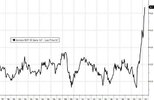not trying to limit the spread of the 'virus ' ??
am not so sure about the water chiller costs , chilled tap water has some minor dangers ( but dangers just the same ) and costs might be increasing for bottled water ( not just delivery costs )
and don't ever assume those damned photocopiers are cheap ( either to buy , maintain . or to feed ) some of the fancy ones are software ( version ) specific , to boot
now maybe the gym is stressed by lower current patronage , and maybe there are extra regulations currently
NDIS has been a cash surge in some gyms, I think we will be seeing a few stories of gross exploitation of NDIS funding coming thru the media in Australia's near future.







